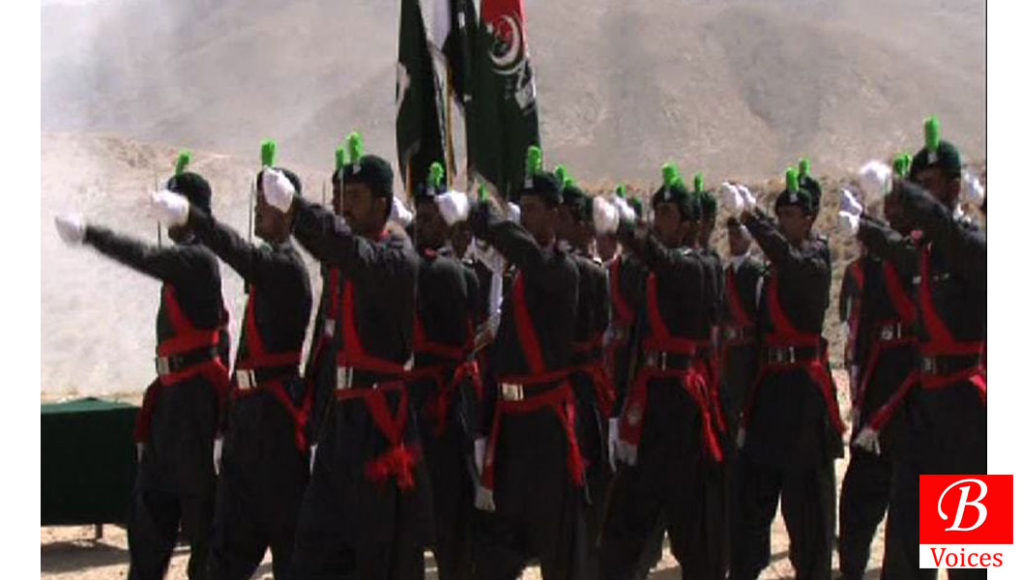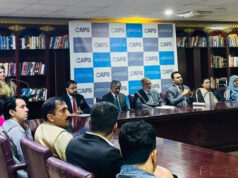Adnan Aamir
Last week, the provincial cabinet decided to merge the Balochistan Levies with the police in Quetta, Gwadar and Lasbela districts. The government took this decision supposedly on administrative grounds, to improve law and order in these important districts of the province. However, this decision was met with intense criticism from the opposition and civil society, due to the sensitive nature of this issue.
Parliamentary opposition in Balochistan rejected the announcement of the merger and said they would resist any move in this regard. Sana Baloch, a vocal member of the Opposition in Balochistan Assembly, attacked the cabinet’s decision to merge Levies with the police in a fiery speech. He argued that if the government wanted to administer rural areas the same way as urban areas, then it should first bring the former at par with the latter in terms of development.
Administratively, Balochistan is divided into “A” and “B” areas. “A” areas are the urban centres which are under the jurisdiction of the police. “B” areas are rural zones of Balochistan, which are under control of the Levies. “B” area makes up 90 percent land area of Balochistan. The Balochistan Levies were established in the late 19th century by the British Raj, as community police for Balochistan. They are extremely popular in rural areas. However, there is a certain perception in the corridors of power that Levies are not doing their job properly. Hence, there are regular attempts to merge this force with the police.
In fact, in September last year, the incumbent Balochistan government approved a Rs8 billion plan to restructure Balochistan Levies in four phases. The restructuring involved improving the capabilities of the Levies by creating new wings and imparting better training. It is in this backdrop that the decision by the government to merge Levies with the police of Balochistan appears to be a deviation from policy.
This proposal by the provincial government is problematic on multiple fronts. Firstly, there is an important financial aspect of this decision to consider. Maintaining a Levies team in a district is much cheaper than maintaining a police force. Last year, the provincial government allocated Rs18.6 billion from the budget to the police and Rs8.9 billion for the Levies, when both these forces cover 10 and 90 percent land area of Balochistan, respectively.
Merging Levies with the police will increase the security bill of the provincial government without bringing significant improvement in the security situation. The Levies are economical because all of the personnel are residents of districts where they are posted. As a result, they can provide security duties in most remote areas with fewer resources. On the other hand, police requires a large number of personnel to manage a station and that increases its expenditure.
Secondly, the idea of merging Levies with the police was already been experimented unsuccessfully in the past. In 2002, General Pervez Musharraf merged Balochistan Levies with police and declared the entire province as “A” area. This experiment cost the provincial exchequer over Rs5 billion. However, this merger failed to bring any significant change in the security situation despite an increase in the security budget. Consequently, the PPP government restored the Levies in Balochistan in April 2010. The restoration resulted in spending of additional funds from the kitty of the most impoverished province of Pakistan. Hence, there is no point in testing an already unsuccessful idea.
Thirdly, there is also a significant social cost of merging the Levies with the police. The former is present in every district and personnel are residents of these districts. Since the Levies personnel are locals, everyone knows them in a closely-knit tribal society. They face continuous social accountability from the people, which prevents them from abusing their power. As a result, the Levies are relatively fair in their public dealings as compared to the police. While it is a common perception that police temper with the cases of even the most heinous crimes in exchange for bribes, there are no such allegations on the Levies.
Due to the bonds of social accountability, the Levies have to function in a responsible manner, which is the reason for their popularly in “B” areas of Balochistan. Merger with the police means that the police personnel will operate across the province in their traditional way without any social accountability. This will be catastrophic.
Moreover, the current security situation in Balochistan has not deteriorated due to any particular failure on part of the Levies. There is a complicated history of various factors and dynamics at play which contribute to aggravating the security situation in Pakistan’s south-western province.
Even if the government pulls the plug on the Levies, it will not resolve security problems of the province. The merger of the Levies would only be a futile and costly exercise, resulting in huge expenditures on mergers and also permanently increasing recurring expenditure for policing in Balochistan. Not to mention that this move will trigger backlash in rural Balochistan.
In the face of mounting political opposition against this decision, the provincial government should take account of the ground realities and the public sentiment against the Levies merger with the police. The government should go ahead with its September 2018 plan to restructure and empower the Levies. Plenty of personnel have been trained by the army and they have become better equipped to dispense their duties. The provincial government should continue such trainings and it should also invest more on upgrades for Levies’ infrastructure. This will significantly improve their performance, which in turn will improve the security situation in rural Balochistan.
Originally published in The Friday Times
Share your comments!








